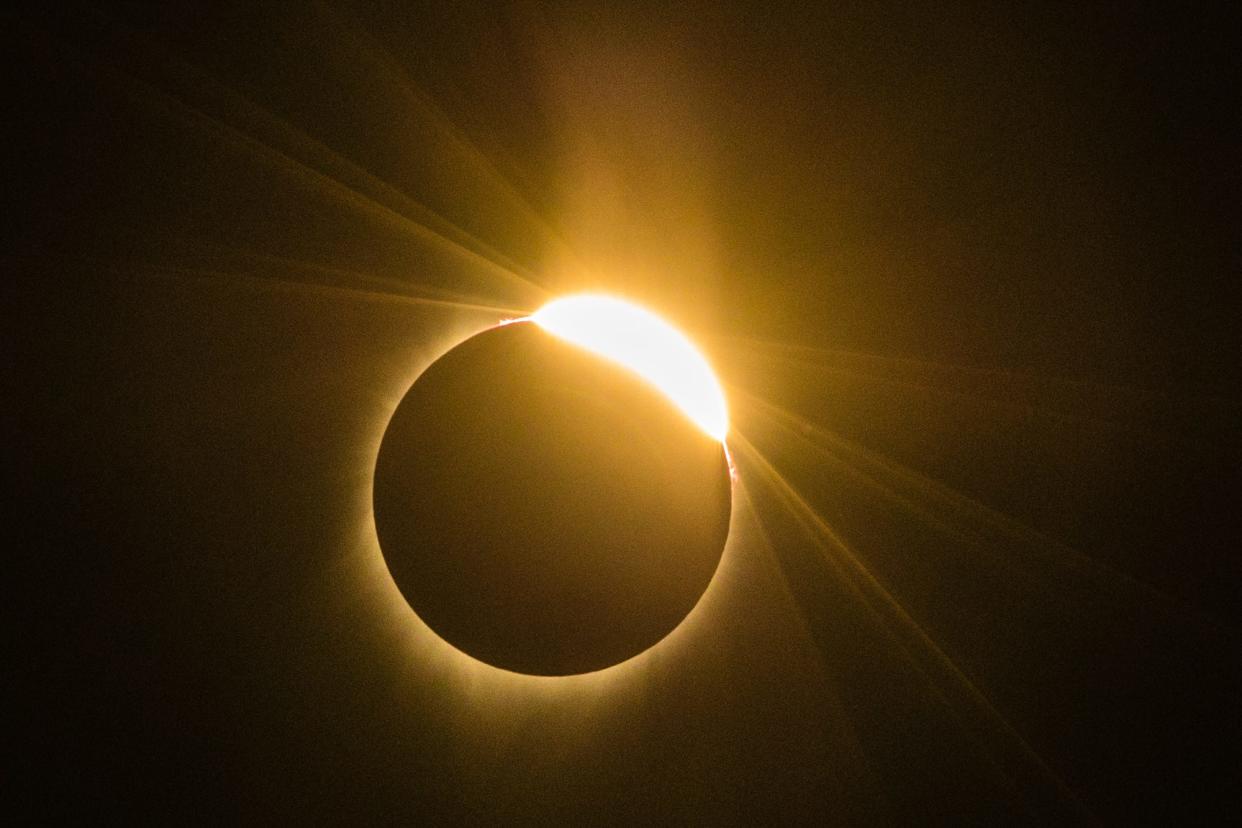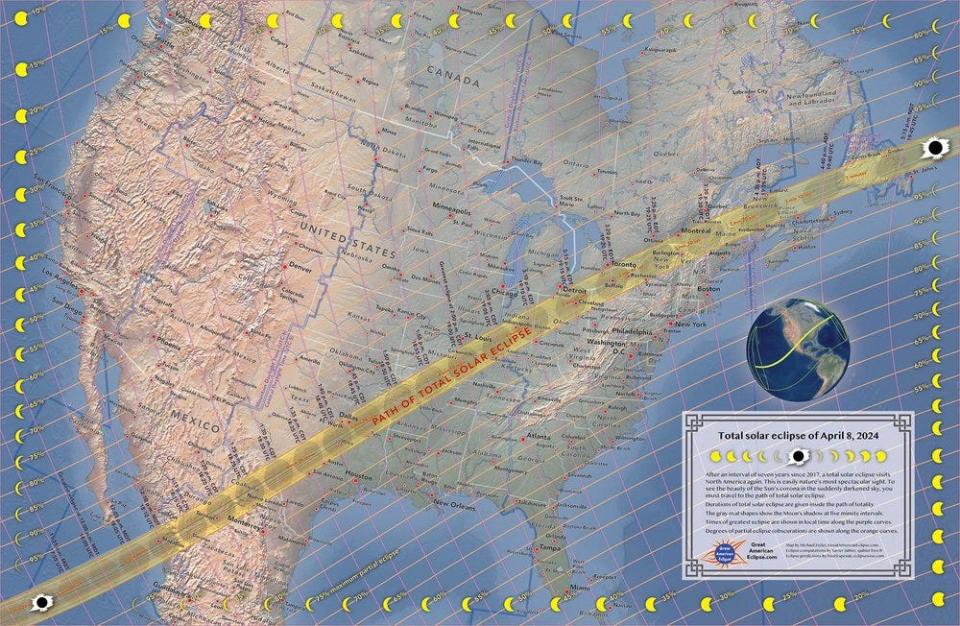Here's where to be when the 2024 solar eclipse passes over Oklahoma

A once-in-a-lifetime event is coming for Oklahomans this April.
For the first time in more than 100 years, areas of Oklahoma will experience a total solar eclipse on April 8, 2024. The eclipse will start in southwest Texas and move across the United States, including directly over southeast Oklahoma cities like Broken Bow, Idabel, Hugo and Antlers.
During the eclipse, the moon will completely block out the sun, casting a shadow on the Earth.
Here's what you need to know to witness the eclipse, including when it will happen and where to watch.
What time will the 2024 eclipse be in Oklahoma?
The eclipse will enter Oklahoma as it crosses the Red River about 12:27 p.m., and exit the state about 3:07 p.m., according to National Eclipse.
But the total eclipse, the direct casting of the moon's shadow, will only last from about 1:44 p.m. to 1:51 p.m. in the state, Great American Eclipse estimates.
The center path of the eclipse, where totality lasts the longest, travels through Oklahoma for a mere 31 miles, the shortest distance of any state through which the centerline travels.
Where in Oklahoma can I see the 2024 eclipse?
While the entire state of Oklahoma will be able to see at least a partial eclipse on April 8, the best place to view the total solar eclipse is in the path of totality that runs through southeastern Oklahoma cities like Broken Bow, Idabel, Hugo and Antlers.
Festivals and special locations include:
Oklahoma state parks in the path of the total eclipse include Lake Wister, Talimena, Clayton Lake, Beavers Bend and Raymond Gary.
Science Museum Oklahoma will host eclipse day activities from 10 a.m. to 2 p.m., including telescopes set up outside for safe viewing, creating indirect eclipse viewers, plus a storytime and crafts inside the museum.
Fort Towson's 1840s Eclipse Watch Party: At the Fort Towson Historic Site, visitors can explore the historic location, watch demonstrations by reenactors and witness the total solar eclipse in the afternoon.
Cherokee Landing State Park in Park Hill: eclipse viewing party with refreshments, eclipse glasses and family-friendly activities.
Tenkiller State Park in Vian: Visitors can make their own shadow viewer, eclipse button and pick up a commemorative eclipse T-shirt and viewing glasses from the park gift shop, and watch the solar eclipse take place in the sky over the lake.
Fenley Farms in Valliant: Weekend camping and day passes to view the eclipse. The six-day event will include bonfires, music, singing, storytelling, and a cookout.
Bigfoot Spring Music Festival in Honobia: live music, food and craft vendors, camping and Bigfoot-themed events

How long will the eclipse last in Oklahoma?
The Oklahoma communities that will experience the longest span of totality, or darkness when the moon completely covers the sun, include Idabel and Broken Bow, according to Eclipse2024.org. Totality will last about 4 minutes and 18 seconds in Idabel, and 4 minutes and 16 seconds in Broken Bow.
There are a few unincorporated communities in Oklahoma that will see about an extra second of totality.
The path of totality runs from Mexico (Sinaloa to Coahuila) to the United States (Texas to Maine) to Canada (Ontario to Newfoundland), according to TimeandDate.com.
Increased visitors means increased traffic, emergency response time
Oklahoma is expected to receive an influx of visitors, which could impose traffic, delays in supply chains and decreased cellular service quality, according to the Oklahoma government website.
As thousands of visitors trek to southeastern Oklahoma to experience the total solar eclipse, the area's road systems, which include U.S. 70, U.S. 259 and State Highway 3, could get backed up.
According to the state government, residents and visitors to the area should expect:
Increased tourists and visitors
Increased traffic
Maximum capacity in hotels, cabins and campgrounds
Decreased quality of cellular service
Delays in supply chains and deliveries
Increased emergency response times
This article originally appeared on Oklahoman: Solar eclipse 2024 path map, Oklahoma traffic info, and more

